Women in birding
In southern Africa, birding has historically been dominated by men and a glance at the Top 50 listers in the subregion quickly confirms this. In the USA, there are many women birders, but there too they seem to be poorly represented in the top rankings. Locally, however, a sea change is occurring. Recent years have seen increasing numbers of female birders of all ages participating at big twitches and attending bird fairs. There are also plenty of women who bird simply for the sheer enjoyment of it, where the appreciation of birds and all things birding is more important than garnering another tick. A growing number of women with excellent birding skills are rising through the local listing ranks. Martin Benadie spoke to a few of those who are close to reaching the benchmark of 900 species seen in the subregion. Their achievements will hopefully inspire more women to become front-runners in this field, whether in management positions in birding organisations, in research and conservation or as list leaders.

How did you develop your field skills?
Helen Biram (HB) Your skills are tested regularly as birding is never dull. Learning about birds is ongoing, every day! Birds appear where they were not previously recorded or expected to be seen and they also challenge your identification skills with their various plumages. With birding you learn to expect the unexpected.
Lizet Grobbelaar (LG) While still at school I visited the Kruger National Park regularly. I was always so frustrated when my parents couldn’t identify the brown raptors we encountered that I decided to learn them myself. At the age of 12 I got my first field guide and I also bought a tape collection of bird calls. I would sit in my room for hours, memorising the calls and paging through my guide, learning to identify the birds I still needed to see.
Margie Hawthorne (MHaw) In the 1960s my husband and I were part of a group that visited the Kruger National Park every year. Our main focus was mammals and we were a bit scornful of the one couple who wanted to stop and watch birds. This all changed when I got my first view of a Lilac-breasted Roller. It was a defining moment as from then on birds became of prime interest to us. Our field skills were developed initially through a neighbour, Peter Oosthuizen. An accomplished birder, Peter introduced us to Warwick Tarboton and Geoff Lockwood, both of whom taught us a great deal. Subsequent field excursions with the likes of Derek Solomon, Peter Ginn, Ian Sinclair, Robin Guy, Carl Vernon and the late Phil Hockey took us further along the learning curve. In Kimberley, we were fortunate enough to benefit from contact with the late Richard Liversidge and with Mark Anderson.
Denne historien er fra July - August 2016-utgaven av African Birdlife.
Start din 7-dagers gratis prøveperiode på Magzter GOLD for å få tilgang til tusenvis av utvalgte premiumhistorier og 9000+ magasiner og aviser.
Allerede abonnent ? Logg på
Denne historien er fra July - August 2016-utgaven av African Birdlife.
Start din 7-dagers gratis prøveperiode på Magzter GOLD for å få tilgang til tusenvis av utvalgte premiumhistorier og 9000+ magasiner og aviser.
Allerede abonnent? Logg på

EXPLORING NEW HORIZONS
Keith Barnes, co-author of the new Field Guide to Birds of Greater Southern Africa, chats about the long-neglected birding regions just north of the Kunene and Zambezi, getting back to watching birds and the vulture that changed his life.

footloose IN FYNBOS
The Walker Bay Diversity Trail is a leisurely hike with a multitude of flowers, feathers and flavours along the way.
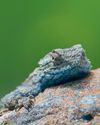
Living forwards
How photographing birds helps me face adversity
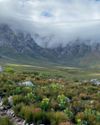
CAPE crusade
The Cape Bird Club/City of Cape Town Birding Big Year Challenge
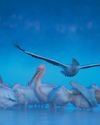
water & WINGS
WATER IS LIFE. As wildlife photographer Greg du Toit knows better than most.
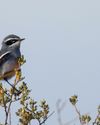
winter wanderer
as summer becomes a memory in the south, the skies are a little quieter as the migrants have returned to the warming north. But one bird endemic to the southern African region takes its own little winter journey.
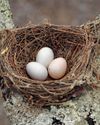
when perfect isn't enough
Egg signatures and forgeries in the cuckoo-drongo arms race
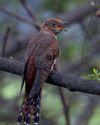
Southern SIGHTINGS
The late summer period naturally started quietening down after the midsummer excitement, but there were still some classy rarities on offer for birders all over the subregion. As always, none of the records included here have been adjudicated by any of the subregion's Rarities Committees.
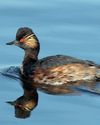
flood impact on wetland birds
One of the features of a warming planet is increasingly erratic rainfall; years of drought followed by devastating floods. Fortunately, many waterbirds are pre-adapted to cope with such extremes, especially in southern Africa where they have evolved to exploit episodic rainfall events in semi-arid and arid regions. But how do waterbirds respond to floods in areas where rainfall - and access to water - is more predictable? Peter Ryan explores the consequences of recent floods on the birds of the Western Cape's Olifants River valley.
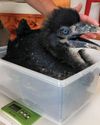
a star is born
It’s every producer’s dream to plan a wildlife television series and pick the right characters before filming.